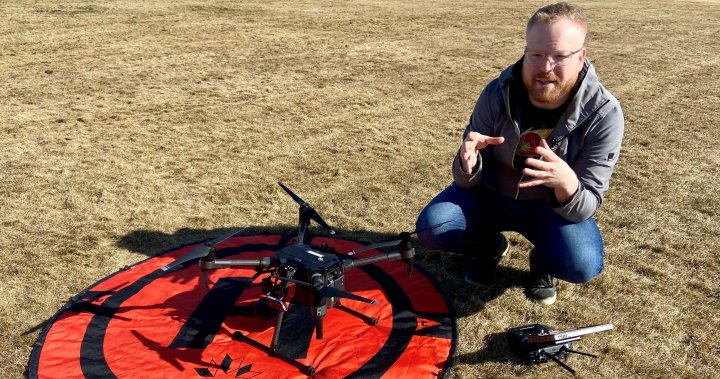
Calgary lab utilizes drones to better understand wildfires
Global News
As wildfires begin to threaten Alberta communities, a cutting-edge lab in Calgary is hoping drones may help researchers better understand these devastating blazes.
As wildfires already begin to threaten Alberta communities this season, a cutting edge lab in Calgary hopes drones will help researchers better understand these devastating blazes.
“In Alberta, more than two-thirds of the fires are human caused, whether that’s malicious or accidental,” said Dr. Gwen O’Sullivan, the vice-dean of research and scholarship with the Faculty of Science and Technology at Mount Royal University (MRU).
O’Sullivan investigates both urban fires and wildfires at the Environmental Forensics and Arson Lab at MRU, trying to determine if a fire was human caused.
“Our work is really about developing techniques and applications that can be used by investigators to help increase the conviction rates for arson,” O’Sullivan said. “We’ve got a huge array of equipment that allows us to analyze contaminants in the environment and that’s important because we’re looking at environmental liability.”
One tool that is now being utilized is drones, outfitted with high-tech cameras and sensors to study wildfires and the smoke wildfires produce.
“We’ve all experienced wildfire smoke in an urban community, where you’ve got that itchy, scratchy feeling, or your asthma or health condition has been exasperated,” O’Sullivan said. “We want to understand more about what that organic component of wildfire smoke is, so we can better characterize it for human health risk.”
The different cameras attached to the drone include a thermal camera which can help detect hotspots.
“For all intents and purposes it’s the same camera they would have up in the Calgary Police Service (CPS) helicopter,” MRU Environmental Science Technologist Shane Steininger said. “You’d be able to point (the camera) at a spot and know how hot it is.”
